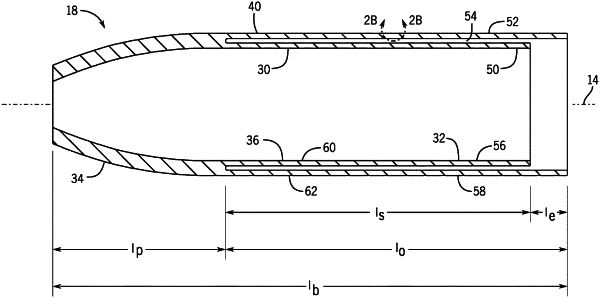| CPC A63B 59/56 (2015.10) [A63B 59/54 (2015.10); A63B 59/58 (2015.10); A63B 60/06 (2015.10); A63B 2102/18 (2015.10); A63B 2209/02 (2013.01)] | 20 Claims |

|
1. A ball bat extending along a longitudinal axis and configured for impacting a ball, the bat comprising:
a barrel portion formed of a fiber composite material from a single molding cycle as a one-piece structure and including a proximal region having a continuous integral single wall construction, a central region and a distal region, the central region including at least first and second central region walls longitudinally extending from the proximal region, and the distal region including first and second distal region walls longitudinally extending from the central region, the first central region wall and the first distal region wall, but not the proximal region, forming a first inner barrel wall, the second central region wall and the second distal region wall forming an outer barrel wall, the first inner barrel wall and the outer barrel wall being spaced apart by a first separation, the first separation being unfilled and longitudinally extending over the entire length of the first distal region wall and at least a portion of the length of the central region, the first separation having a radial dimension between the first inner barrel wall and the outer barrel wall within the range of 0.010 to 0.150 inch, the proximal region being formed from the continuous integral single wall construction does not include a separation, and the first separation not extending to the proximal region;
an end cap coupled to the distal region of the barrel portion; and
a handle portion connected to the proximal region of the barrel portion.
|